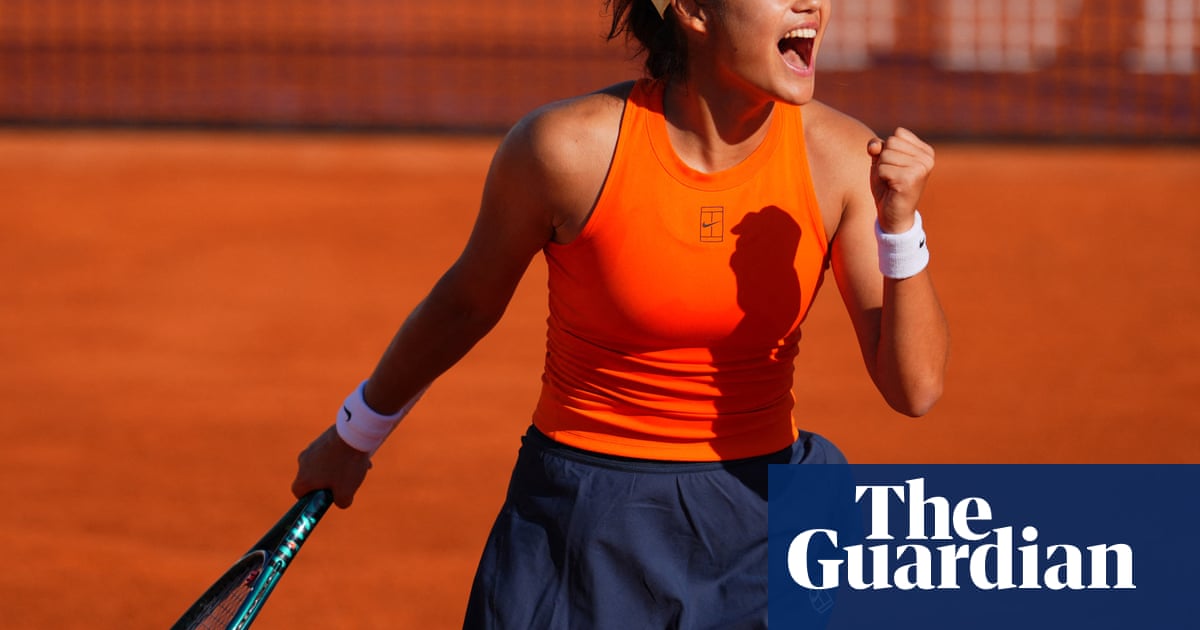It was during her days of preparation for the Italian Open thatEmma Raducanudecided her approach to clay-court tennis needed to change. Instead of making significant adjustments to her game to try and suit the surface, she would make the red clay adhere to her own vision. She resolved to take the initiative and dominate her opponents from the front foot.
To her credit, she has effectively backed up those intentions in the heat of battle. Raducanu continued to build confidence and momentum in Rome as she produced one of her cleanest performances of the season to reach the third round with a 6-2, 6-2 win over the Swiss lucky loser Jil Teichmann.
A couple of days after her turbulent, tension-filled first-roundwin over the teenage Australian Maya Joint, which saw her fail to serve out the match in set two before regrouping well to close out the final set, Raducanu found herself back on the same court under completely different circumstances.
In contrast to the frigid, heavy nighttime conditions of her first round inside the Supertennis Arena, a match that finished at 10.45pm, competing in the heat of the afternoon helped to imbue her offensive shotmaking with even more pace. The circumstances around the match, however, presented an interesting challenge. Raducanu had actually been scheduled to face Ekaterina Alexandrova, the 21st seed, until around three hours before the match when it emerged that the Russian had withdrawn. She was replaced by Teichmann, a Swiss player ranked No 94, who had lost in the final qualifying round.
Not only does Teichmann, a lefty with a spinny topspin forehand, play a completely different style to the flat-hitting, ultra-aggressive Alexandrova, the pair had also never faced each other. Still, this was a great opportunity for Raducanu against a lower-ranked opponent.
“To be honest, it was pretty mental,” Raducanu said in her on-court interviewwith Sky Sports. “I was warming up for my match against Alexandrova, practising with Mirra [Andreeva], and all of a sudden I get told I’m playing Jil and then, on top of that. she’s a lefty. So it’s a completely different challenge. I honestly haven’t practised with a lefty; I haven’t played one since [Marketa] Vondrousova in February in Abu Dhabi. So it was a challenge. First few games I was adjusting to the way the ball curls, but I’m really proud of myself, how I fought through.”
From the beginning, she forced herself inside the baseline and looked to dictate the vast majority of the exchanges, robbing time from her opponent by taking the ball early. After the two players split the first four games equally between them, Raducanu brilliantly distanced herself with some of her cleanest ball-striking of the season. While her sweet two-handed backhand usually plays a decisive role in all of her success, this performance was driven by a spectacular forehand day.
Along with her typical early shotmaking, sharp injections of pace and her ability to change directions with precision, Raducanu mixed up her forehand nicely, making life difficult for Teichmann with a variety of heavy and loopy topspin alongside her potent, flat strokes. It was an impressive display of smart, offensive tennis that was still effective on clay. Along with her excellent forehand performance, Raducanu served well, finding potent first serves on key moments and remaining more solid on her second serve.
The Briton has been about as animated as ever in both of her matches this week, celebrating most of her point-ending shots and key points with victorious fist pump and audible cheer. It is perhaps a reflection of her pumping herself up to execute this attacking brand of tennis. It worked. With the first set secured, Raducanu continued to grow in confidence, breaking early in the second set and always looking comfortable. Despite needing four match points to win a protracted final game, this time she closed out an accomplished, impressive performance without a hint of drama.
